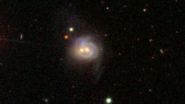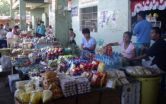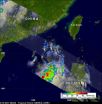(Press-News.org) ANN ARBOR, Mich. — By digging a little deeper, researchers may have found a potential target for reversing the deadly blood infection sepsis.
Scientists at the University of Michigan Health System looked at microRNA, a type of RNA that does not code for a protein itself but that can regulate the expression of other genes and proteins. They found that by attacking the right microRNA they could influence a key trigger of inflammatory diseases such as sepsis.
Traditionally, researchers have gone after a bigger target, attempting to find compounds that directly control inflammatory triggers such as interleukin 6, or IL-6.
"If you can connect all the dots, you can target a single microRNA and impact an inflammatory process like sepsis. But given the role of IL-6 in other diseases, we think this might have broader implications than sepsis for diseases where IL-6 plays a role," says study author Pavan Reddy, M.D., associate professor of hematology/oncology at the U-M Medical School.
Results of the study appear in the June 9 issue of Blood.
The researchers looked specifically at dendritic cells, specialized types of cells that are considered the first-responders in an immune response. Dendritic cells are also amongst the most important cells that turn on other immune cells. Using bioinformatics tools, the researchers identified two microRNAs within the dendritic cells that seemed most predominant in regulating IL-6. One, called miR-142-3p, was shown to have a direct link to regulating IL-6, and only IL-6.
The researchers were then able to specifically target miR-142-3p that would block it from influencing IL-6. They found in mice that doing this reduced deaths from sepsis.
"We showed that microRNAs have unique expression profiles in dendritic cells and that miR-142-3p has an important role in dendritic cell response. This suggests targeting microRNAs may be a novel strategy for treating sepsis," says lead study author Yaping Sun, M.D., Ph.D., internal medicine research investigator at the U-M Medical School.
The researchers believe this approach will also hold potential for other inflammatory diseases such as juvenile rheumatoid arthritis, inflammatory bowel disease and graft-vs.-host disease, a frequent complication of bone marrow transplant. More research is needed before any treatments become available to patients.
INFORMATION:
Additional authors: Sooryanarayana Varambally, Christopher A. Maher, Qi Cao, Peter Chockley, Tomomi Toubai, Chelsea Malter, Evelyn Nieves, Isao Tawara, Peter A. Ward, Arul Chinnaiyan, all from U-M; Yongqing Wang from University of Toledo Medical Center, Ohio
Funding: National Institutes of Health
Disclosure: None
Reference: Blood, Vol. 117, No. 23, pp. 6172-6183, June 9, 2011
U-M researchers find potential new way to fight sepsis
MicroRNAs show promise for targeting inflammatory diseases
2011-06-11
ELSE PRESS RELEASES FROM THIS DATE:
FY 2012 H-1B Visa Quota Opens April 1, 2011!
2011-06-11
Yes, it's that time of year again: The H-1B visa quota for FY 2012 will finally open up on April 1, 2011, making 65,000 new H-1B visa numbers available for new employment beginning on October 1, 2011. Since the H-1B quota for the last several fiscal years has closed well before the next fiscal year commenced, thousands of applicants are already preparing their H-1B Petitions to be filed on or soon after April 1, 2011, which is the earliest date on which an employer may submit a new petition. Absent some extraordinary Congressional action, the recent trend of early-exhaustion ...
Prototype demonstrates success of advanced new energy technology
2011-06-11
CORVALLIS, Ore. – With the completion of a successful prototype, engineers at Oregon State University have made a major step toward addressing one of the leading problems in energy use around the world today – the waste of half or more of the energy produced by cars, factories and power plants.
New technology is being developed at OSU to capture and use the low-to-medium grade waste heat that's now going out the exhaust pipe of millions of automobiles, diesel generators, or being wasted by factories and electrical utilities.
The potential cost savings, improved energy ...
Clients' Bill of Rights: 2011
2011-06-11
Every year, I write hundreds of articles for the press dealing, in general terms, with new immigration laws, regulations and interpretations impacting hundreds of thousands of immigrants both inside and outside the US. Rather than start off this New Year with an article regarding new changes in the law or changing interpretations as to what can be done, legally, for clients in certain circumstances; I decided to publish an article about how things should be done, in practice, for clients seeking the highest quality legal representation. Clients should be aware that when ...
USDA-led consortium sequences genome of key wheat pathogen
2011-06-11
This release is available in Spanish.
A U.S. Department of Agriculture (USDA)-led consortium of scientists has fully sequenced the genome of the pathogen that causes the wheat disease known as septoria tritici blotch, which can cause significant yield losses.
According to the International Maize and Wheat Improvement Center in Mexico, losses can reach as high as 50 percent if fungicides are not used to protect susceptible wheat lines. Thise disease is found in every wheat-growing area in the world, including the United States. The research, published in PLoS Genetics, ...
New substances added to HHS Report on Carcinogens
2011-06-11
The U.S. Department of Health and Human Services today added eight substances to its Report on Carcinogens, a science-based document that identifies chemicals and biological agents that may put people at increased risk for cancer.
The industrial chemical formaldehyde and a botanical known as aristolochic acids are listed as known human carcinogens. Six other substances – captafol, cobalt-tungsten carbide (in powder or hard metal form), certain inhalable glass wool fibers, o-nitrotoluene, riddelliine, and styrene – are added as substances that are reasonably anticipated ...
Nearby galaxy boasts 2 monster black holes, both active
2011-06-11
GREENBELT, Md. -- A study using NASA's Swift satellite and the Chandra X-ray Observatory has found a second supersized black hole at the heart of an unusual nearby galaxy already known to be sporting one.
The galaxy, which is known as Markarian 739 or NGC 3758, lies 425 million light-years away toward the constellation Leo. Only about 11,000 light-years separate the two cores, each of which contains a black hole gorging on infalling gas.
The study will appear in a forthcoming issue of The Astrophysical Journal Letters.
"At the hearts of most large galaxies, including ...
Domestic Violence: Convictions Can Change Everything
2011-06-11
Domestic violence can destroy a family. Not only does the physical abuse result in pain and suffering for the victim, but the long-term mental anguish also can make it difficult for everyone involved in the situation. Even false allegations of domestic violence can create problems that can forever change a person's life. Because of the emotionally-charged nature of these crimes, many people simply plead guilty to try to make the matter disappear, often without realizing the implications of their actions.
The number of reported domestic violence cases remains high. According ...
Pennsylvania Superior Court Upholds $3 Million Verdict
2011-06-11
The Pennsylvania Superior Court recently upheld the verdict for the estate of a woman who was 87 years old at the time of her death was awarded $3 million in a wrongful death action in Philadelphia.
A Vibrant 87-year-old
Jeanette Kessler went in for elective knee surgery. She was described by her lawyer, Ed Chacker, as a vibrant 87-year-old.
She spent time with friends, took trips to Atlantic City, played cards and was the designated driver for dinner trips with friends.
She took exercise classes weekly and participated in line dancing, he said.
Chacker commented ...
Can small loans reduce poverty?
2011-06-11
Small loans, somewhere in the neighborhood of $100 to $500 dollars, are an increasingly popular weapon in the fight to reduce poverty. Called microcredit, institutions dole out these monetary advances to help extremely poor people engage in successful entrepreneurship and improve their quality of life.
While proponents extol its virtues, researchers look for evidence; they want to know if it works. Does it really increase financial development and help individuals make solid monetary decisions as its supporters claim?
"Microfinance works," said Dean Karlan, economics ...
NASA sees heavy rainfall in Tropical Storm Sarika
2011-06-11
Tropical Depression 05W has grown into a tropical storm and given the name Sarika as it heads toward China. Satellite imagery from NASA shows that the center of the storm seems to be separated from the strongest thunderstorms.
The Tropical Rainfall Measuring Mission (TRMM) satellite that is co-managed by NASA and the Japanese Space Agency measures rainfall in the tropics, and today's satellite imagery (June 10, 2011) on Tropical Storm Sarika shows that the heaviest rainfall (falling at 2 inches/50 mm per hour) is south of the center of the storm's circulation. That's ...
LAST 30 PRESS RELEASES:
Polyphenol-rich diets linked to better long-term heart health
Tai chi as good as talking therapy for managing chronic insomnia
Monthly injection helps severe asthma patients safely stop or reduce daily steroids
The Lancet Respiratory Medicine: Monthly injection may help severe asthma patients safely reduce or stop daily oral steroid use
Largest study reveals best treatment options for ADHD
Tsunami from massive Kamchatka earthquake captured by satellite
Hidden dangers in 'acid rain' soils
Drug developed for inherited bleeding disorder shows promising trial results
New scan could help millions with hard-to-treat high blood pressure
9th IOF Asia-Pacific Bone Health Conference set to open in Tokyo
Can your driving patterns predict cognitive decline?
New electrochemical strategy boosts uranium recovery from complex wastewater
Study links America’s favorite cooking oil to obesity
Famous Easter Island statues were created without centralized management
Captive male Asian elephants can live together peacefully and with little stress, if introduced slowly and carefully, per Laos case study of 8 unrelated males
The Galapagos and other oceanic islands and Marine Protected Areas (MPAs) may be "critical" refuges for sharks in the Tropical Eastern Pacific, as predatory fish appear depleted in more coastal MPAs t
Why are shiny colours rare yet widespread in nature?
Climate-vulnerable districts of India face significantly higher risks of adverse health outcomes, including 25% higher rates of underweight children
New study reveals spatial patterns of crime rates and media coverage across Chicago
Expanding seasonal immunization access could minimize off-season RSV epidemics
First-of-its-kind 3D model lets you explore Easter Island statues up close
foldable and rollable interlaced origami structure: Folds and rolls up for storage and deploys with high strength
Possible therapeutic approach to treat diabetic nerve damage discovered
UBC ‘body-swap’ robot helps reveal how the brain keeps us upright
Extensive survey of Eastern tropical Pacific finds remote protected areas harbor some of the highest concentrations of sharks
High risk of metastatic recurrence among young cancer patients
Global Virus Network statement on the Marburg virus outbreak in Ethiopia
'Exploitative' online money gaming in India causing financial, health and social harm, analysis shows
Mayo Clinic researchers identify why some lung tumors respond well to immunotherapy
The pterosaur rapidly evolved flight abilities, in contrast to modern bird ancestors, new study suggests
[Press-News.org] U-M researchers find potential new way to fight sepsisMicroRNAs show promise for targeting inflammatory diseases



